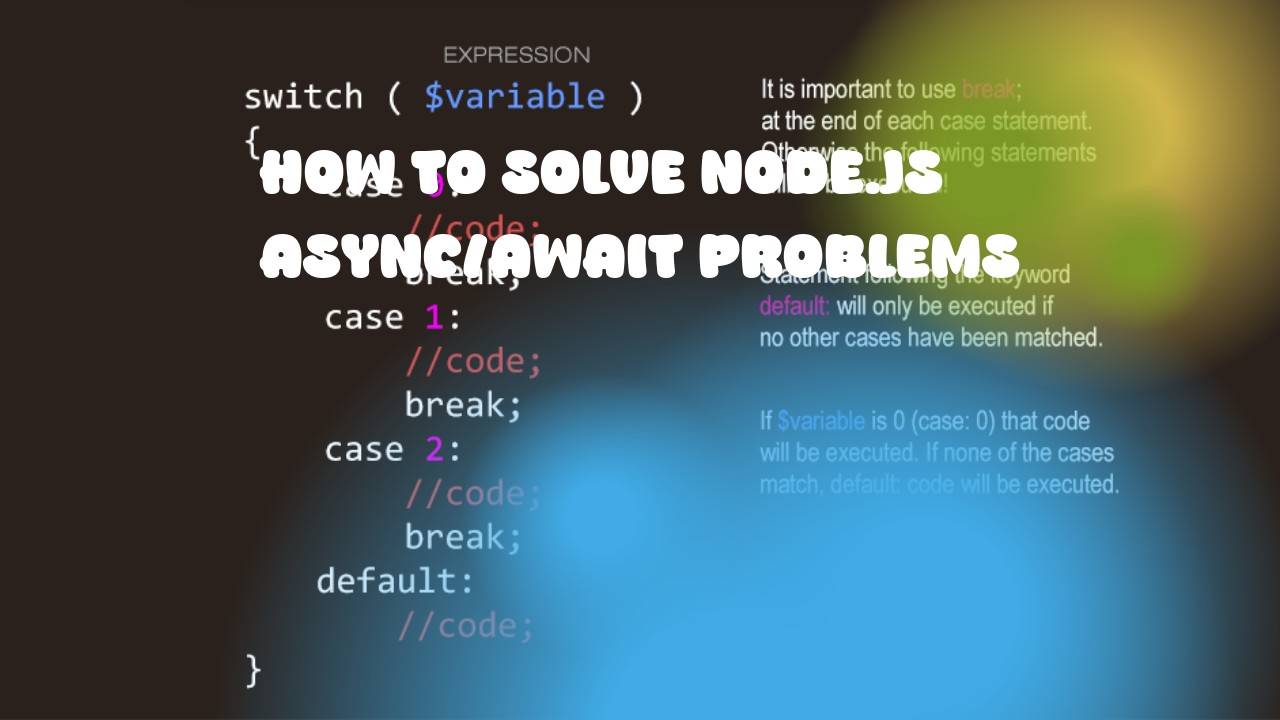Node.js is asynchronous by nature, which means that it executes tasks without blocking the main thread of execution. However, when working with promises or async/await in Node.js, you may encounter problems like callback hell, promise chaining, and unexpected behavior due to the order of execution. Here are some ways to solve these issues:
- Callback Hell: Callback hell is a common problem that arises when using callbacks in asynchronous programming. To avoid it, you can use Promises or async/await instead. With promises, you can chain multiple asynchronous operations together and handle any errors using .catch() method. Here's an example:
function getData(url1, url2) {
return new Promise((resolve, reject) => {
request(url1, (err, res1) => {
if (err) {
reject(err);
} else {
request(url2, (err, res2) => {
if (err) {
reject(err);
} else {
resolve([res1.body, res2.body]);
}
});
}
});
});
}
getData('https://api.example.com/data1', 'https://api.example.com/data2')
.then(data => {
console.log(data);
})
.catch(err => {
console.error(err);
});
In this example, we use a promise to handle multiple asynchronous operations and return the final result. If any of the operations fail, we reject the promise with an error message.
- Promise Chaining: Promise chaining is similar to callback hell but uses more readable syntax. Instead of nesting callbacks inside each other, you can chain them using .then() method. Here's an example:
function getData(url) {
return new Promise((resolve, reject) => {
request(url, (err, res) => {
if (err) {
reject(err);
} else {
resolve(res.body);
}
});
});
}
getData('https://api.example.com/data')
.then(data1 => {
return getData('https://api.example.com/more-data');
})
.then(data2 => {
console.log([data1, data2]);
})
.catch(err => {
console.error(err);
});
In this example, we use promise chaining to handle multiple asynchronous operations in a more readable way. If any of the operations fail, we reject the promise with an error message.
- Async/Await: Async/await is a syntactic sugar over promises. It allows you to write asynchronous code that looks like synchronous code but still runs asynchronously. To use async/await, you need to define a function using the async keyword and then use the await keyword before each asynchronous operation. Here's an example:
function getData(url) {
return new Promise((resolve, reject) => {
request(url, (err, res) => {
if (err) {
reject(err);
} else {
resolve(res.body);
}
});
});
}
async function getDataAsync() {
try {
let data1 = await getData('https://api.example.com/data');
let data2 = await getData('https://api.example.com/more-data');
console.log([data1, data2]);
} catch (err) {
console.error(err);
}
}
getDataAsync();
In this example, we use async/await to handle multiple asynchronous operations in a more readable way. If any of the operations fail, we throw an error inside the try block and catch it in the catch block.

